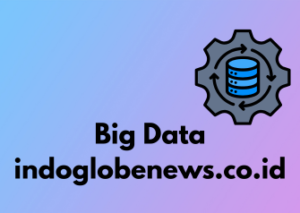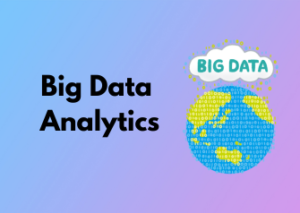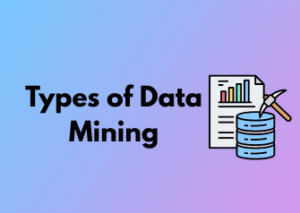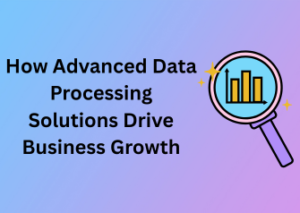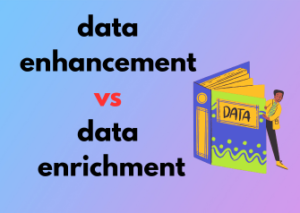Welcome! Let’s dive into the fascinating world of Market Research Online Communities (MROCs). Before we get ahead of ourselves, let’s first understand what makes these online communities such a valuable and distinct tool in the realm of market research.
At their core, online communities offer something traditional research tools just can’t: continuous, dynamic engagement with real people in real time. Picture this— instead of one-off surveys or focus groups, think of having a consistent space where participants (your potential customers or users) actively share their thoughts, challenges, and preferences over time. Pretty powerful, right?
Key Features That Set Online Communities Apart
- Ongoing Access to Insights: Traditional research methods often provide snapshot data. While useful, they may miss out on capturing evolving trends or long-term behavioral insights. Online communities, on the other hand, allow researchers to observe how opinions or preferences shift over days, weeks, or even months.
- In-Depth Qualitative Feedback: Unlike surveys that rely heavily on tick-box responses, online communities thrive on rich conversations. Through discussions, forums, and open-ended prompts, you can get the “why” behind the data.
- A Sense of Belonging: Participants in these communities feel part of something bigger. This creates a sense of connection and trust, enabling more honest and meaningful feedback.

Why Should Researchers Pay Attention?
So, why should you as a market researcher care about tapping into these online hubs of activity? It boils down to how their structure aligns perfectly with modern consumer dynamics. Today’s customers are digital natives—they thrive in interactive online realms. By meeting them in their comfort zones, online communities bridge the gap between businesses and consumers more effectively than many traditional avenues.
More importantly, *online communities act as mirrors into your target audience’s lives*, offering organizations the unique ability to walk in their customers’ shoes. This can lead to business-transforming insights, such as:
- What motivates their choices
- How they perceive your product or service
- Evolving trends they prioritize
How Market Researchers Can Make the Best of It
If you’re wondering how to implement this tool effectively, here are a few pro tips to get you started:
- Define a Clear Purpose: Be it understanding consumer pain points or testing new product concepts, ensure your online community has a focused goal. The clearer the objective, the more actionable the insights!
- Prioritize Moderation: A well-moderated online community is key to success. Skilled moderators can steer discussions, probe deeper into issues, and maintain respectful engagement among participants.
- Embrace Authenticity: Encourage participants to share their genuine experiences, unfiltered opinions, and personal anecdotes. The more authentic the interaction, the more valuable your findings.
Building Trust and Engagement: The Core of Successful Communities
When it comes to online communities for market research, trust and engagement sit at the heart of their success. It’s one thing to build a space to gather insights; it’s another to create an environment where participants feel welcome, valued, and motivated to contribute honestly. But don’t fret—building trust and engagement isn’t rocket science. It’s about intentionality, consistency, and understanding your audience. Let’s dive into some practical ways to make it happen!

The Personal Touch: Why Relationships Matter
Would you share your deeper thoughts or honest opinions in a space where you felt like just another name on a list? Probably not. People are naturally more inclined to engage when they feel recognized and appreciated. This is why personalization is key. Make your participants feel seen by addressing them by name, referencing their past contributions, and tailoring questions to reflect their interests or demographics.
Think of it like building a friendship—you don’t jump straight into big questions but work to establish rapport and trust over time. Similarly, online communities thrive when there’s a sense of mutual respect and human connection.
Consistency Is Your Best Friend
Consistency in communication and interaction is foundational. If participants know when to expect updates, surveys, or follow-ups, they’ll be more likely to engage. Imagine joining a community and hearing nothing for weeks. The silence might feel alienating, even discouraging. But regular touchpoints? They’re like the rhythm that keeps a song (or in this case, your community) alive.
Try having clear schedules, such as weekly check-ins, monthly challenges, or ongoing discussions that keep your participants invested. Regular activity signals to your members that this is a space worth their time and input.
Facilitate Honest Dialogue (and Listen!)
One of the best ways to encourage participation is by fostering an open and judgment-free environment. Let your contributors know that all thoughts and ideas are welcome. Some people may hesitate, feeling like their input isn’t valuable or unique. But here’s where you step in—thank them for sharing, ask follow-up questions that show genuine curiosity, and highlight how their insights make a difference.
Don’t just “listen” passively, though. Let participants see their feedback in action. For example, if you’re running a product-focused community, share how a customer’s idea influenced the next prototype. Tangible outcomes build trust faster than empty promises.
Make It Fun with Gamification
Who says market research has to feel boring? Spice up your community by incorporating gamification. Adding elements like leaderboards, badges, or rewards for continuous participation fosters engagement and natural competitiveness. Just remember, the rewards don’t always have to be monetary—sometimes, shout-outs, sneak previews, or exclusive content can be just as motivating.
Be Transparent and Authentic
Last but not least, don’t underestimate the power of transparency. If participants feel they’ve walked into a faceless corporate machine attempting to harvest data, trust evaporates. Instead, be upfront about how their feedback will be used. Share your goals, update them on progress, and admit challenges where necessary. Authenticity reassures people they’re contributing to something meaningful.
Quick Tips for Higher Engagement
- Keep the tone conversational—no one likes reading robotic prompts.
- Ask specific, relatable questions—vagueness only frustrates contributors.
- Celebrate milestones, whether it’s community growth or great contributions.
- Use multimedia (like images or polls) to make interactions more dynamic.
Technology in Action: Tools That Support Seamless Interaction
Let’s face it — when it comes to building thriving market research online communities, technology is the unsung hero. From keeping conversations flowing smoothly to ensuring community members feel heard and valued, the right tools make all the difference. But with so many tools out there, which ones really help create seamless interaction? Let’s dive into the essentials and uncover how technology transforms the way we connect, collaborate, and extract insights.
Core Tools That Drive Engagement
At the heart of every successful online community are tools that make communication easy, intuitive, and enjoyable. Here’s a look at a few that deserve the spotlight:
- Discussion Platforms: These are the backbone of interaction. Tools like Discourse or dedicated community forums allow members to share their thoughts in threads, creating a hub for meaningful conversations.
- Live Chat and Video Integration: Sometimes, written communication isn’t enough. Platforms like Zoom, Microsoft Teams, or embedded live chat features allow for real-time discussions, ensuring participants can elaborate on their ideas in a more dynamic way.
- Gamification Features: Engagement often spikes when you add an element of fun. With features like leaderboard rankings, badges, or rewards, platforms such as Influitive motivate participation while creating an engaging environment.
But it’s not just about the tools — it’s about how they’re implemented. The trick is to create a balance where technology enhances, not overwhelms.
Personalization: A Game Changer
If there’s one thing that grabs attention in an online community, it’s personalization. Gone are the days of generic emails or one-size-fits-all surveys. Modern tools allow businesses to tailor experiences for their participants, ensuring they feel heard and valued. Some examples include:
- Customized Dashboards: Tools like Recollective offer participants personalized dashboards where they can track tasks, see updates, or revisit their contributions.
- AI-Driven Insights: Platforms with integrated AI can analyze responses and provide tailored follow-up questions based on user input, encouraging deeper conversations and exploration of ideas.
Personalization doesn’t just enhance the user experience; it also helps you extract more meaningful data as participants are more likely to engage authentically when they feel understood.
Analytics That Empower Decision-Making
It’s not enough to facilitate conversations — you need tools that help users make sense of all the chatter. Analytical capabilities embedded within community platforms can offer invaluable insights. Here’s how they can help:
- Sentiment Analysis: Tap into the emotional undertone of discussions to gauge how participants feel about your product or brand.
- Keyword and Topic Tracking: Quickly spot recurring themes to identify what resonates most with your audience.
- Participant Engagement Metrics: Gauge the level of involvement from each member to identify active contributors or those who may need additional encouragement to participate.
These tools not only simplify the analysis process but also ensure data accuracy so you can make informed decisions based on genuine participant feedback.
Staying Ahead with Emerging Technologies
Innovation moves quickly, and staying ahead means embracing cutting-edge technology. Consider how advancements like AI chatbots can streamline participant onboarding or how virtual reality could create immersive experiences for exploring concepts and ideas. Staying open to new possibilities ensures your community remains a dynamic space for meaningful interaction.
Data Quality Matters: Extracting Genuine Insights Without Overcomplication
When it comes to market research online communities (MROCs), one golden rule stands out: quality beats quantity every time. It’s tempting to get lost in a sea of data points, but chasing sheer volume can muddy the waters, making it harder to uncover valuable insights. Instead, let’s talk about how to hone in on truly meaningful data—and more importantly, how to do so without turning data collection into an overwhelming task for you or your participants.
Focus on the Right Questions, Not Just More Questions
Think of your online community as a two-way conversation. Imagine being asked 50 questions in one interview—exhausting, right? The same applies to your participants. Gathering high-quality data starts with designing focused and intentional questions that create value by targeting specific objectives.
- Be clear and concise: Stick to language your audience understands, avoiding unnecessary jargon.
- Ask open-ended questions: These encourage meaningful responses instead of checkbox answers. For example, instead of asking “Do you like Product X?” ask “What features of Product X make it useful to you?”
- Test your questions: Before rolling them out, ensure they flow naturally and align with your key objectives.
Quality Participants = Quality Data
The quality of your data is only as good as the participants providing it. It’s essential to have an engaged, diverse, and appropriate group for your research.
- Screen carefully: Use well-designed screening processes to ensure you attract participants who meet your target audience criteria.
- Nurture engagement: Building trust with your community encourages more thoughtful and honest participation. Incentives, transparency, and feedback loops all play a role here.
If you try to capture insights from people who aren’t genuinely interested or relevant, you risk getting skewed or superficial responses.
Beware of Data Overload
In an online community, you’re likely to collect a wealth of data, from survey responses to discussions and feedback. While this sounds ideal, all that information can quickly turn into a tangled mess if not managed properly. Here’s how to keep it streamlined:
- Filter and prioritize: Focus on data that aligns directly with your research goals. Not every single comment needs deep analysis.
- Segment responses: Group participants by demographics, buying behaviors, or other meaningful categories to make your insights actionable.
- Lean on technology: Tools like text analysis software and sentiment analysis can help identify trends without human bias. Just make sure the tech doesn’t overshadow the human interpretation—it’s all about balance.
Flexibility Creates Genuine Insights
One of the key advantages of online research communities is the ability to step away from rigid, cookie-cutter approaches. Data collection doesn’t have to follow a strict formula. Engage your participants in dynamic ways, such as live chats, multimedia responses (like video or photos), or storytelling prompts. You’ll be surprised how much richer the feedback becomes!
Making Integration Work: Using Community Insights Across Business Strategies
So, you’ve built your market research online community, engaged participants, and gathered a treasure trove of insights. Now what? One of the most important aspects of any market research is not just the data itself, but how well you integrate those learnings into your broader business strategies. Let’s talk about how to make that happen in a way that’s practical, effective, and even exciting.
Bridging the Gap Between Insights and Action
One common pitfall companies face is treating insights from online communities as “standalone nuggets” of wisdom rather than building them into everyday decisions. Instead, think of your community as a continuous feedback loop. When implemented effectively, insights don’t just fuel one-off campaigns—they inform everything from product innovation to customer service improvements.
Here’s how you can make insights truly actionable across the organization:
- Establish ownership: Designate individuals or teams to not only manage your online community but also act as champions for integrating findings across departments.
- Share digestible insights: Insights are only useful if others in the organization understand them. Think executive summaries, visual dashboards, and infographics—not lengthy reports.
- Embed insights into workflows: For example, align findings with existing planning tools like customer journey maps or annual strategy frameworks to make insights harder to ignore.
Aligning Insights with Business Goals
Every business has unique goals, whether it’s increasing ROI, improving brand loyalty, or cracking into a new market. Your online community is a goldmine of data, but it’s much less meaningful unless tied to these objectives. For example:
- If your business strategy focuses on enhancing customer experiences, leverage the community to explore pain points or test new service ideas.
- If your goal is to innovate your product offering, use the community to co-create with users. Feedback loops ensure you’re building what customers want, not what you assume they need.
- Working on fine-tuning your messaging? A/B test slogans, campaign ideas, or branding concepts directly within the community.
The key is alignment—connect each research initiative with tangible outcomes that serve the bigger picture.
Encourage Cross-Functional Collaboration
Insights from online communities aren’t only relevant to your marketing team—they can be transformative across departments. To maximize the value of these assets, nurture a collaborative culture where teams freely share and act on the data. For instance:
- Sales teams can access insights on buyer hesitations to refine their pitches.
- Product teams can learn what users actually value, helping prioritize features or enhancements.
- Customer support teams might find recurring issues they can address preemptively.
Bake these opportunities into meetings, tools, or shared platforms where everyone has a chance to engage with the data.
Measure Impact – And Celebrate Wins
Let’s not forget: integration isn’t a one-and-done task. To refine your processes, continuously assess how these insights are driving results across your business. Are product satisfaction scores climbing thanks to feature updates sourced from the community? Did campaign performance spike because of community-tested messaging? Celebrate these wins, big and small, to reinforce the importance of your online community’s contributions.
Overcoming Participation Challenges Without Losing Value
Let’s be honest—getting people involved in Market Research Online Communities (MROCs) isn’t always a walk in the park. Whether it’s dwindling interest, lack of time, or even hesitation to openly share thoughts, there are challenges to overcome. But here’s the thing: participation doesn’t have to be hard to sustain, and you can address these obstacles without compromising the value of insights you’re gathering. Ready to dive in? Let’s explore how to tackle this head-on!
Understanding Why Participation Wanes
Before jumping into solutions, it’s essential to know why members of your online community might disengage. Some common reasons include:
- Limited time in their daily schedules.
- A lack of meaningful interaction or personal relevance in the activity.
- Repeated surveys or similar tasks that lead to fatigue.
- Unclear incentives or rewards for participation.
- Concerns about the security or privacy of the community platform.
If any of these sound familiar, you’re not alone—these are common hurdles faced by many market researchers. The good news is, each of these points can be addressed with thoughtful planning.
Creating a Participant-Centric Approach
One of the most effective ways to overcome participation challenges is to put your participants front and center. This means designing the community around their preferences, needs, and motivations. Here’s how:
- Offer clear value: People are more likely to participate if they understand the importance of their input. Highlight how their feedback will lead to improvements or innovation—and ensure you follow through on any promises.
- Keep tasks engaging: Static surveys can be replaced with fun, creative activities. Think polls, video responses, gamified quizzes, and collaborative brainstorming sessions. Avoid monotony!
- Personalize the experience: Address participants by name, tailor content or tasks to match their demographics or interests, and show genuine interest in their input. A personal touch goes a long way.
Balancing Flexibility with Structure
Flexibility is key in today’s fast-paced world. People don’t have hours to spend on research tasks, no matter how valuable they are. Instead, focus on micro-interactions that fit seamlessly into their day-to-day routines:
- Break tasks into bite-sized pieces that can be completed in just a few minutes.
- Allow participants to respond at their own convenience, rather than within rigid timeframes.
- Consider mobile-friendly platforms—response rates often increase when participants can engage on the go!
While you want to offer flexibility, structure still matters. Clearly communicate expectations, deadlines, and task objectives so participants know how and when to contribute.
Reward Engagement Thoughtfully
Motivating participation doesn’t always require big, fancy rewards. Here are a few small gestures that can make a big difference:
- Introduce social incentives, like leaderboard rankings or shoutouts, to encourage friendly competition.
- Provide small but meaningful rewards, such as gift cards, discounts, or exclusive early access to products.
- Share results or outcomes to let participants see the real-world impact of their involvement.
Remember, recognition can often be just as valuable as a physical reward!
Spotting Trends Early: How Online Communities Keep You Ahead
Let’s talk about spotting trends. In today’s fast-paced world, predicting what’s next is like holding a golden ticket. Businesses that identify shifts in consumer preferences and industry movements ahead of time thrive, and guess what? Market Research Online Communities (MROCs) can be your secret weapon for staying on the cutting edge.
Why Trends Matter
Think of trends as whispers of what people want, value, and care about. When you identify them early, you’re not just reactive—you’re proactive. You can tweak your offerings, innovate effectively, or even create entirely new market opportunities. If you’re curious about how online communities play into this, let’s dive into their superpowers for trend-spotting.
How Online Communities Uncover Trends
Online communities are more than platforms for discussion—they actively foster collaboration, creativity, and honest feedback. Here’s how they shine at spotting trends:
- Real-time discussions: Members of an online community often share their evolving interests, concerns, and preferences in real-time. Pay attention to recurring themes, repeated questions, or sudden spikes in topics to catch emerging patterns.
- Feedback loops: Collaborative communities allow members to interact with each other and your business. These interactions can offer clues into what’s gaining traction, and even better, why.
- Cultural signals: Communities are melting pots of diverse participants. Digging into shared stories, memes, and even how members communicate can reveal shifts in attitudes and behaviors.
Practical Steps for Spotting Trends in Your Community
Okay, so you’ve got the concept. But how do you actually spot these trends? It involves a mix of observation, technology, and strategy:
- Tap Into Analytics: Many online community platforms come with built-in analytics. Use tools like keyword tracking, heatmaps for popular discussion topics, or sentiment analysis to uncover what’s heating up.
- Create Themed Discussions: Occasionally, guide the conversation toward open-ended questions like, “What’s the one product you wish existed right now?” or “What’s becoming a ‘must-have’ for you?” These targeted conversations can yield invaluable insights.
- Identify Influencers: Every community has its trendsetters—those vocal, engaged participants who spark ideas and gather supporters. Keeping tabs on these members can shine a light on trends before they go mainstream.
- Monitor “Quiet Signals”: It’s not just about what’s talked about most; subtle differences matter. Pay attention to emerging terms, new comparisons among competitors, or unexpected needs voiced by members.
From Observation to Action
Spotting trends is exciting, but acting on them is where the magic happens. Once you’ve identified a potential trend from your community, consider the following:
- Test it: Launch a small-scale campaign, poll members, or pilot a new product idea to see if the trend holds water.
- Validate externally: Compare what you’re observing in your community with broader market data to confirm its relevance.
- Act fast: Trends can fizzle out quickly. If you see promising signals, don’t let red tape hold you back—capitalize on them before your competitors do.


